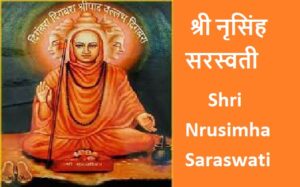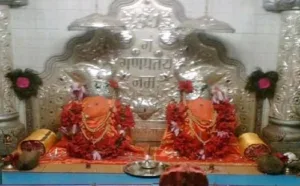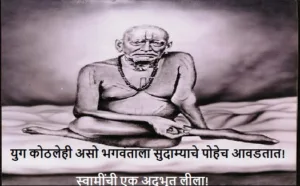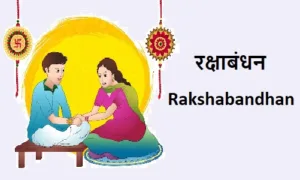उजव्या बाजूला, डाव्या बाजूला आणि मध्यभागी सोंड असलेल्या गणेशाचे महत्त्व : Significance of Ganesha with trunk on right side, left side and centre?
गणेश, ज्याला गणपती, विनायक किंवा विघ्नहर्ता म्हणूनही ओळखले जाते, हे हिंदू देवतांमध्ये सर्वाधिक पूजल्या जाणार्या देवतांपैकी एक आहे. तो अडथळे दूर करणारा आणि बुद्धी आणि बुद्धीचा देव म्हणून पूज्य आहे.
गणेशाच्या सर्वात विशिष्ट वैशिष्ट्यांपैकी एक म्हणजे त्याची सोंड, जी त्याच्या दैवी स्वरूपाच्या विविध पैलूंचे प्रतीक आहे असे मानले जाते.
गणेशाच्या सोंडेची स्थिती उजवीकडे, डावीकडे किंवा मध्यभागी आहे यावर अवलंबून भिन्न अर्थ आणि महत्त्व आहे.
उजव्या सोंडेचा गणपती
जेव्हा गणेशाला त्याच्या सोंडेने उजव्या बाजूला चित्रित केले जाते, तेव्हा ते इडा नाडीचे प्रतिनिधित्व करते, जे हिंदू पौराणिक कथेनुसार मानवी शरीरातील तीन मुख्य ऊर्जा वाहिन्यांपैकी एक आहे.
इडा नाडी शरीराच्या डाव्या बाजूशी संबंधित आहे आणि ती चंद्र, स्त्री शक्ती आणि ग्रहणक्षमता आणि अंतर्ज्ञान या गुणांशी जोडलेली आहे असे म्हटले जाते.
म्हणून, गणेशाची सोंड उजव्या बाजूला असल्याने शरीरातील उर्जा संतुलित राहते आणि सुसंवाद आणि शांती मिळते असे मानले जाते.
शिवाय, उजव्या बाजूला गणेशाची सोंड देखील कृती आणि सिद्धी यांचे प्रतीक मानली जाते.
शरीराची उजवी बाजू सूर्य, मर्दानी उर्जा आणि कृती आणि तर्क यांच्या गुणांशी संबंधित आहे.
म्हणून, उजव्या बाजूला सोंड असलेल्या गणेशाची देवता म्हणून पूजा केली जाते जी व्यक्तींना त्यांच्या मार्गात येणाऱ्या कोणत्याही अडथळ्यांवर मात करून कृती करण्यास आणि त्यांचे ध्येय साध्य करण्यास सक्षम करते.
डाव्या सोंडेचा गणपती
जेव्हा गणेशाला त्याच्या सोंडेने डाव्या बाजूला चित्रित केले जाते, तेव्हा ते पिंगळा नाडीचे प्रतिनिधित्व करते, जी मानवी शरीरातील इतर मुख्य ऊर्जा वाहिनी आहे.
पिंगळा नाडी शरीराच्या उजव्या बाजूशी संबंधित आहे आणि ती सूर्य, पुरुषी ऊर्जा आणि कृती आणि तर्क यांच्या गुणांशी जोडलेली आहे असे म्हटले जाते.
म्हणून, गणेशाची सोंड डाव्या बाजूला असल्याने शरीरातील उर्जा संतुलित राहते आणि समतोल आणि सुसंवादाची स्थिती निर्माण होते असे मानले जाते.
शिवाय, गणेशाची डाव्या बाजूला असलेली सोंड ही बुद्धी आणि ज्ञानाची शक्ती दर्शवते असे मानले जाते.
शरीराची डावी बाजू चंद्र, स्त्री शक्ती आणि ग्रहणक्षमता आणि अंतर्ज्ञान या गुणांशी संबंधित आहे.
म्हणून, डाव्या बाजूला सोंड असलेल्या गणेशाला बुद्धी आणि ज्ञान देणारी देवता म्हणून पूजले जाते, व्यक्तींना त्यांच्या खऱ्या क्षमतेकडे मार्गदर्शन करतात.
मध्यभागी सोंडेचा गणपती
जेव्हा गणेशाला त्याची सोंड मध्यभागी दर्शविली जाते, तेव्हा ते इडा आणि पिंगळा नाड्यांच्या संतुलनाचे आणि मानवी शरीरातील मध्यवर्ती ऊर्जा वाहिनी असलेल्या सुषुम्ना नाडीचे प्रबोधन दर्शवते.
सुषुम्ना नाडी कुंडलिनीशी संबंधित आहे, दैवी ऊर्जा जी मणक्याच्या पायथ्याशी असते आणि ती ध्यान आणि योग यासारख्या आध्यात्मिक पद्धतींद्वारे जागृत केली जाऊ शकते.
म्हणून, मध्यभागी सोंड असलेल्या गणेशाची देवता म्हणून पूजा केली जाते जी व्यक्तींना आध्यात्मिक ज्ञान आणि परमात्म्याशी एकरूप होण्यास मदत करते.
असे मानले जाते की गणेशाची सोंड मध्यभागी ठेवून ध्यान केल्याने, व्यक्ती स्वतःची आंतरिक आध्यात्मिक शक्ती जागृत करू शकतात आणि त्यांच्या आध्यात्मिक प्रगतीमध्ये अडथळा आणणारे कोणतेही अडथळे दूर करू शकतात.
शेवटी, हिंदू पौराणिक कथांमध्ये गणेशाच्या सोंडेच्या स्थानाला खोल प्रतीकात्मक महत्त्व आहे.
उजव्या बाजूला, डाव्या बाजूला किंवा मध्यभागी, गणेशाच्या सोंडेची पूजा समतोल, बुद्धी, कृती आणि आध्यात्मिक शक्तीचे प्रतीक म्हणून केली जाते, जे व्यक्तींना अडथळ्यांवर मात करण्यासाठी आणि त्यांची खरी क्षमता प्राप्त करण्यास सक्षम करते.

गणपति अथर्वशीर्ष : Ganpati Atharvashirsha
श्री गणपतीची आरती : Shri Ganpatichi Aarti
Significance of Ganesha with trunk on right side, left side and centre?
Ganesha, also known as Ganapati, Vinayaka, or Vighnaharta, is one of the most widely worshipped deities in the Hindu pantheon. He is revered as the remover of obstacles and the god of wisdom and intellect. One of the most distinctive features of Ganesha is his trunk, which is believed to symbolize various aspects of his divine nature. The position of Ganesha’s trunk has different meanings and significance, depending on whether it is on the right side, left side, or in the center.
Trunk on the Right Side
When Ganesha is depicted with his trunk on the right side, it is said to represent the ida nadi, which is one of the three main energy channels in the human body according to Hindu mythology. The ida nadi is associated with the left side of the body and is said to be connected to the moon, feminine energy, and the qualities of receptivity and intuition. Therefore, the presence of Ganesha’s trunk on the right side is believed to balance the energies of the body and bring about a state of harmony and peace.
Moreover, Ganesha’s trunk on the right side is also believed to symbolize the power of action and accomplishment. The right side of the body is associated with the sun, masculine energy, and the qualities of action and logic. Therefore, Ganesha with his trunk on the right side is worshipped as the deity who empowers individuals to take action and achieve their goals, overcoming any obstacles that come their way.
Trunk on the Left Side
When Ganesha is depicted with his trunk on the left side, it is said to represent the pingala nadi, which is the other main energy channel in the human body. The pingala nadi is associated with the right side of the body and is said to be connected to the sun, masculine energy, and the qualities of action and logic. Therefore, the presence of Ganesha’s trunk on the left side is believed to balance the energies of the body and bring about a state of equilibrium and harmony.
Moreover, Ganesha’s trunk on the left side is also believed to symbolize the power of intellect and knowledge. The left side of the body is associated with the moon, feminine energy, and the qualities of receptivity and intuition. Therefore, Ganesha with his trunk on the left side is worshipped as the deity who bestows wisdom and knowledge, guiding individuals towards their true potential.
Trunk in the Center
When Ganesha is depicted with his trunk in the center, it is said to represent the balance of the ida and pingala nadis, and the awakening of the sushumna nadi, which is the central energy channel in the human body. The sushumna nadi is associated with the Kundalini, the divine energy that is said to reside at the base of the spine and can be awakened through spiritual practices such as meditation and yoga.
Therefore, Ganesha with his trunk in the center is worshipped as the deity who helps individuals attain spiritual enlightenment and union with the divine. It is believed that by meditating on Ganesha with his trunk in the center, individuals can awaken their own inner spiritual power and overcome any obstacles that hinder their spiritual progress.
In conclusion, the position of Ganesha’s trunk has deep symbolic significance in Hindu mythology. Whether on the right side, left side, or in the center, Ganesha’s trunk is worshipped as a symbol of balance, wisdom, action, and spiritual power, empowering individuals to overcome obstacles and attain their true potential.















